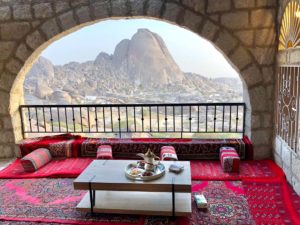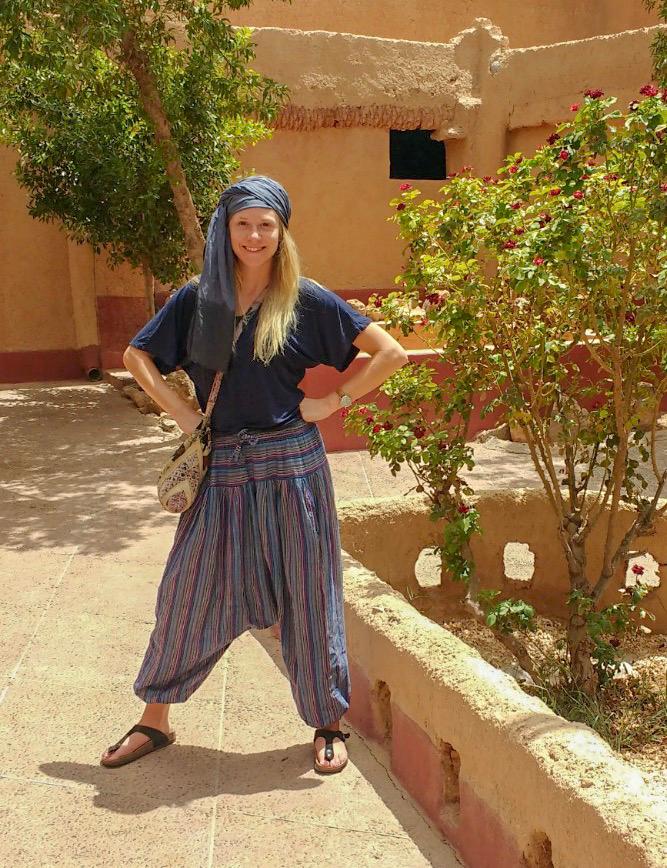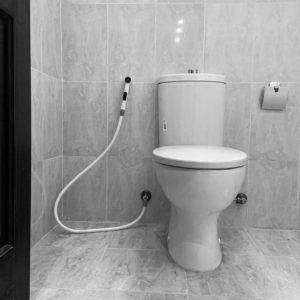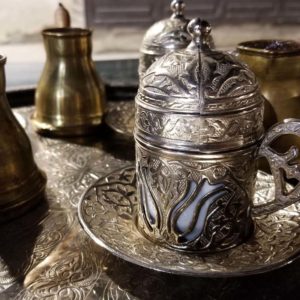When I was a child, learning about Moses in Sunday school and watching VeggieTales and The Prince of Egypt, I thought of places like the Red Sea and Mt. Sinai to be so far away and foreign that they were almost fictional. I never could have imagined I would one day live in that same land – that I would swim in the Red Sea, drive around the desert where the Israelites wandered, and hike the stones and boulders of (what might be) Mt. Sinai.
We’re in our 5th year of living here but I just recently learned the Land of Midian described in Exodus is modern-day northwest Saudi Arabia. Midian is where Moses fled after his unfortunate murdering incident in Egypt. It’s where he stopped at a well and met Jethro’s daughters, ended up marrying Zipporah, and would’ve been perfectly content living the shepherd life in anonymity until God lit a fire under his feet and sent him back to Egypt to rescue the Israelites. Then he crossed the Red Sea with the whole gang back into Midian where God showed up in miraculous ways, all described in the book of Exodus in the Bible.
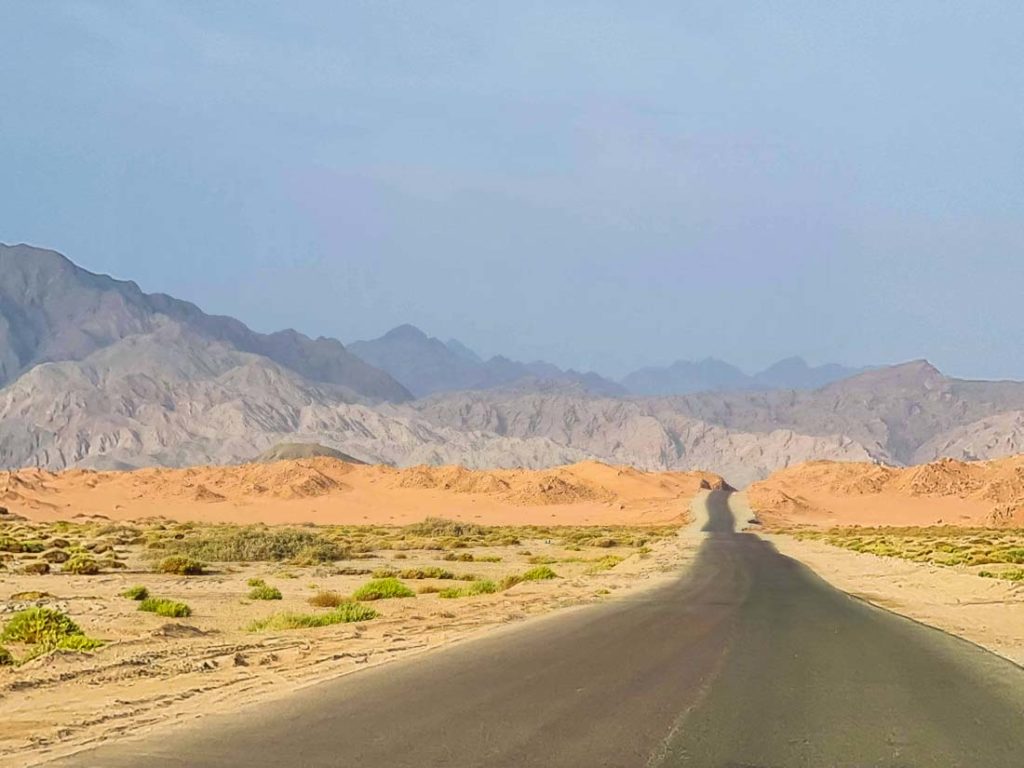
Many of the sites mentioned in Exodus are generally thought to be on the Sinai Peninsula in Egypt, or Jordan, but there are theories that evidence points to the sites being in Saudi Arabia. The Quran has many of the same Exodus stories as the Bible, although details differ. Saudi had generally been closed to tourists over the years until late 2019 when they instituted an official tourist visa. The country has grand plans of increasing their status as a tourist destination over the coming years, but they have a long way to go in terms of infrastructure and customer service. Because of this, there is now more access to interesting historical sites but they are still relatively unexplored and barren, much in their original state.
The market is wide open for tourism companies to develop, and we were able to connect with a new one that specializes in the Exodus sites of the northwest Saudi region. The company is called Desert Paths and they handle all the logistics of transportation to the sites once you get to Tabuk (the locations are fairly spread out), food, accommodations, and guides. Because the area was new to us and we weren’t keen on traveling alone in the desert with little kids and lack of cell service, we jumped on the opportunity when Desert Paths invited us to take part in their 5-day tour of the region. This post is our synopsis of the trip and I hope it encourages you to put northwest Saudi on your travel bucket list.
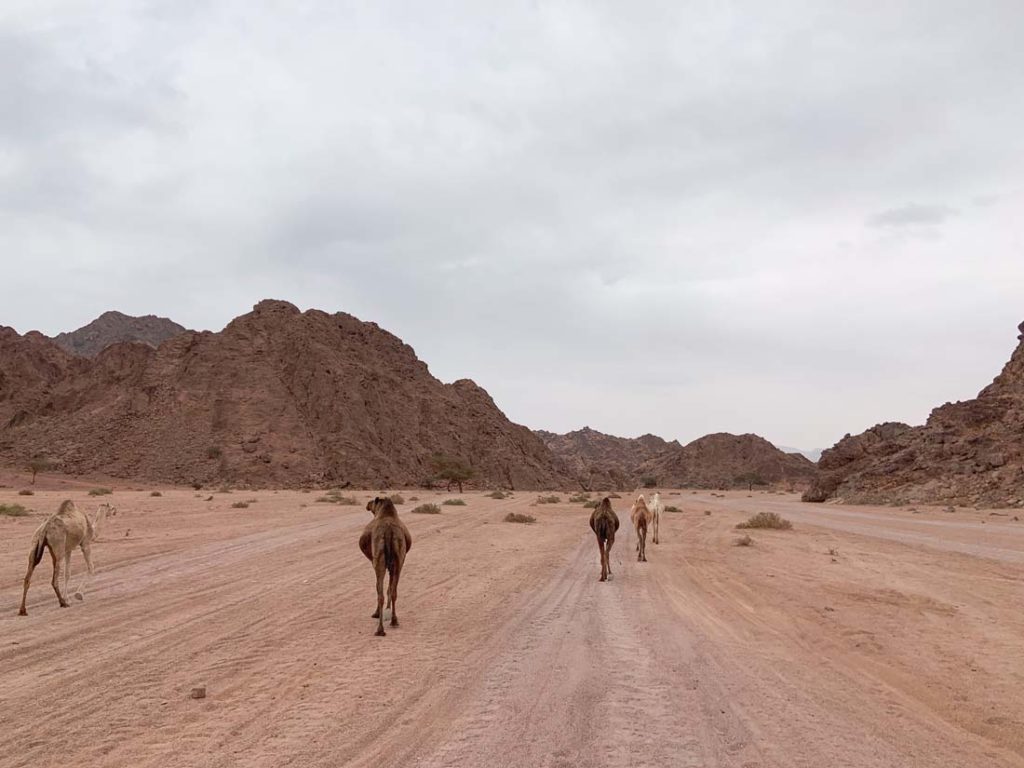
We flew into Tabuk, the largest city in northwest Saudi (population 667,000 according to Wikipedia), on a Friday evening and were greeted by a friendly local guy who took us to a traditional restaurant in the city then drove us to our istraha (rest house/rental house/furnished apartment) for the night. Desert Paths offers a full Bedouin-style camping experience (they provide all the gear) but we opted to stay in istrahas because we weren’t sure how our young children would handle tent sleeping for the first time. Our kids were happy with our choice when we opened the istraha door and were confronted with disco lights and a swimming pool in the living room. Party central!
Catalina Seaplane
The next morning, we were picked up by a Saudi guide who took us on our first adventure. Fueled with V60’s from Ratio and breakfast from Reef and Ra’eef, we headed out to see the Catalina Seaplane Wreckage – clearly not a Biblical site, but a necessary tourist stop. The 1930’s restored US Navy seaplane landed on the coast of Saudi in 1960, near the tail end of the Gulf of Aqaba, a hop and skip across the water from Egypt. The pilot and his family were on a round-the-world tour that abruptly ended when the Saudi Guard wasn’t too happy about their unannounced arrival. The pilot and his passengers returned home but the plane remains right where it landed 62 years ago. Tourists and locals come here to take pictures of the unique plane with the deep turquoise water only meters away. Nothing else is around the area, except a nice restroom put in by NEOM.
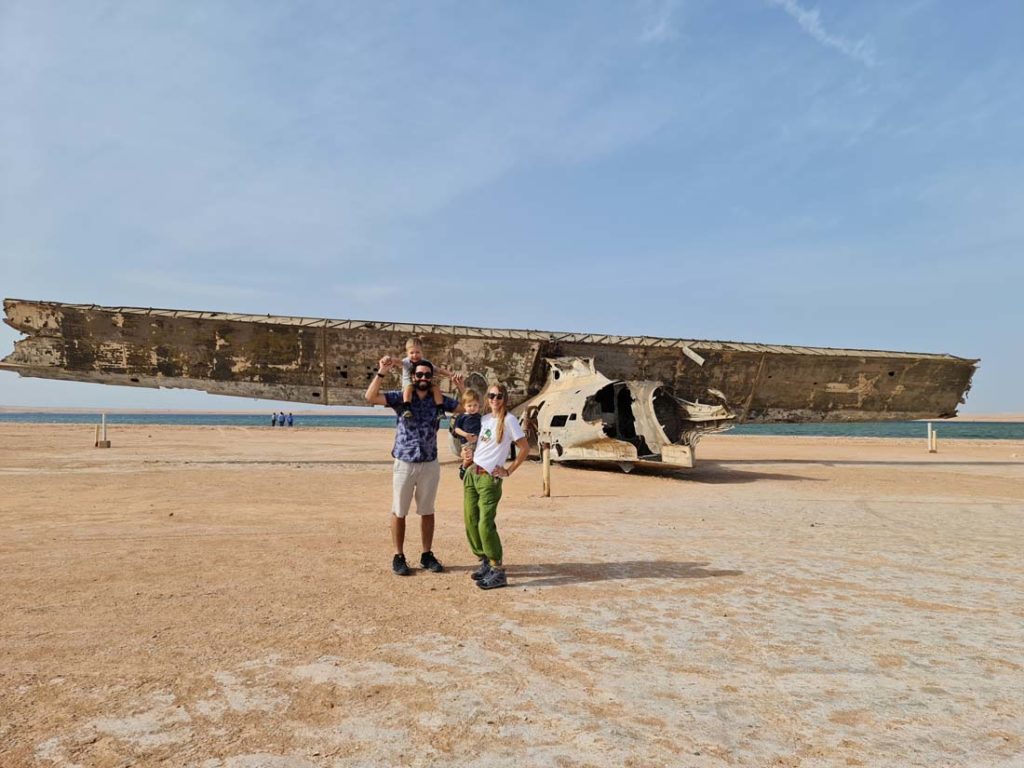
Let me take a quick intermission here to explain NEOM because it encompasses Tabuk and basically all the sites we saw on our tour. From what I understand, NEOM will be a futuristic city-region that will function as a tourist destination and home to at least one million people. Saudi’s Crown Prince introduced plans for NEOM to the world in 2017 and, with a meager $500 billion, this smart city has already started development. The first phase is slated to be complete in 2025. Apparently the end goal is to have a massive city powered by wind and solar energy with no cars and AI integrated into everyday life. They have a lot of plans. Check it out here: neom.com I’m not sure what the construction of NEOM means for all the historical sites in the area (hopefully they will be conserved and access will remain open to the public), but at this point the places are still pretty untouched.
12 Springs of Moses
After the seaplane, we drove up the coast to the city of Maqna where the 12 Springs of Moses are said to be. In the Bible the place is called Elim (Exodus 15:27) and the Israelites camped near the springs and palms. As we walked down toward the water, the lushness of the area took us by surprise. What a welcome sight this oasis would be for anyone traveling in the area! Ezra had fun sticking his hand in the water to feel it bubbling up from the ground. I would’ve happily strung up our hammock and spent the rest of the afternoon soaking up the peaceful beauty of the place but, refreshed by the sight of water and greenery, we had to get back on the road en route to our last destination of the day, Wadi Tayyib Ism.


Wadi Tayyib Ism
Wadi Tayyib Ism opens directly into the Gulf of Aqaba and looks like a scene straight out of Land Before Time. Locally, the area is known as the Valley of Moses, where Moses and the Israelites entered Midian after crossing the Red Sea. Egypt is clearly visible across the gulf. Passing a palm grove and following the narrow chasm into the mountains, we were enveloped by 600 meter-high granite walls. Flocks of birds played above us and a gurgling stream meandered through the gravel. Unfortunately, we only had 20 minutes to explore the wadi. It is temporarily closed to the public but our driver luckily knew the security guard and he was able to grant us a quick look-around. I’m very grateful because this ended up being my favorite location of the trip. I can’t wait to go back when it reopens and hike the 5k length of the canyon.
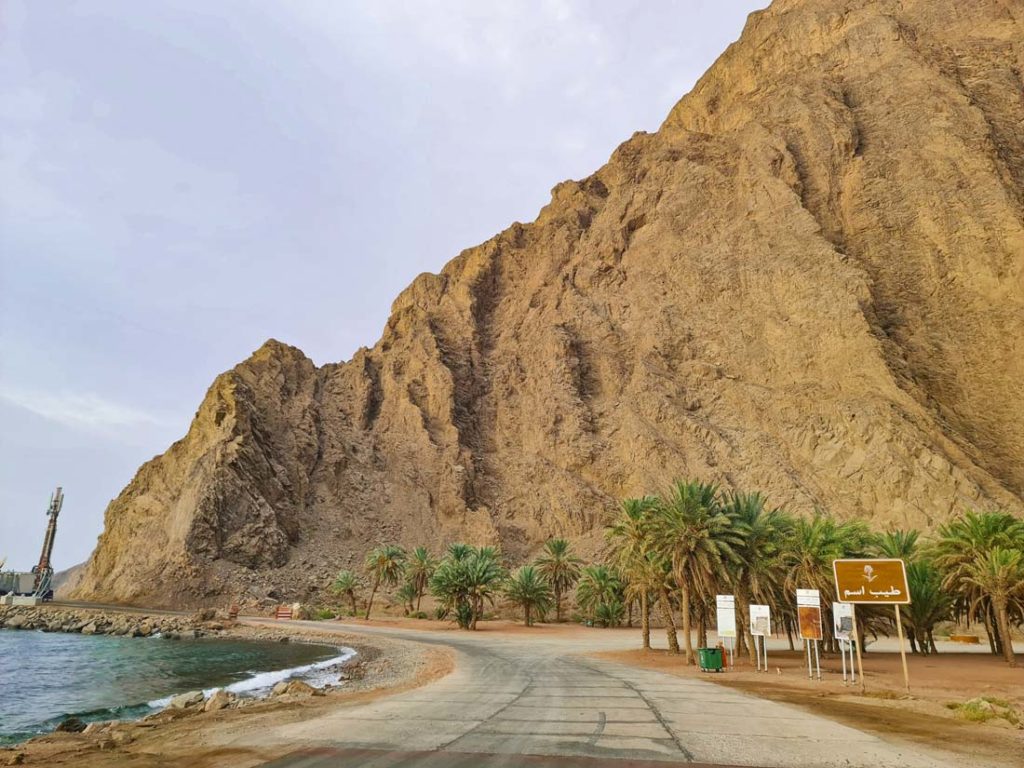

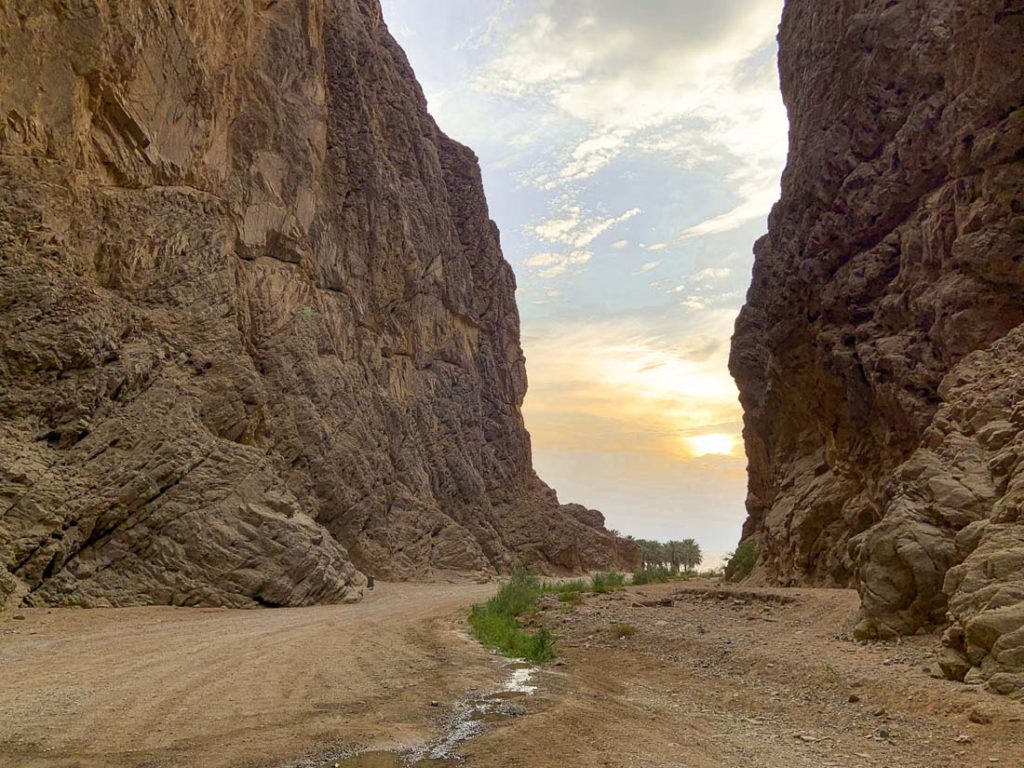
Moses’ Well & Mugha’ir Shu’ayb
That evening we stayed at an istraha on a farm outside of Al Bada, a city that was located on a historical trade route and was likely the ancient capital of Midian. The next morning we explored some of Al Bada’s archaeological places of interest, beginning with another well potentially related to Moses. Some people claim the well in Al Bada to be where he met Jethro’s daughters at the start of his voluntary exile in Midian. A staircase circles down to the bottom of the well and is characteristic of the Nabataean style, a people group who also resided in this area. The Nabataeans are most well-known for Petra in Jordan, but they also flourished in areas of Saudi like Madain Saleh and Al’Bada. For timeline reference, Moses lived around 13th century BCE while the Nabataeans came later in the 3rd century BCE.
After the well, we drove a few minutes to Mugha’ir Shu’ayb or “The Tombs of Shu’ayb (aka Jethro).” Local legend attributes this area to Jethro and his tribe, supported by the Quran, but the tombs have distinguished Nabataean facades. The necropolis is dug into the hillside and staircases lead up to the tombs to allow visitors freedom to explore inside. At the base of the mountain is a new visitor center and museum with information about the Al Bada region (in English and Arabic). Very lovely.

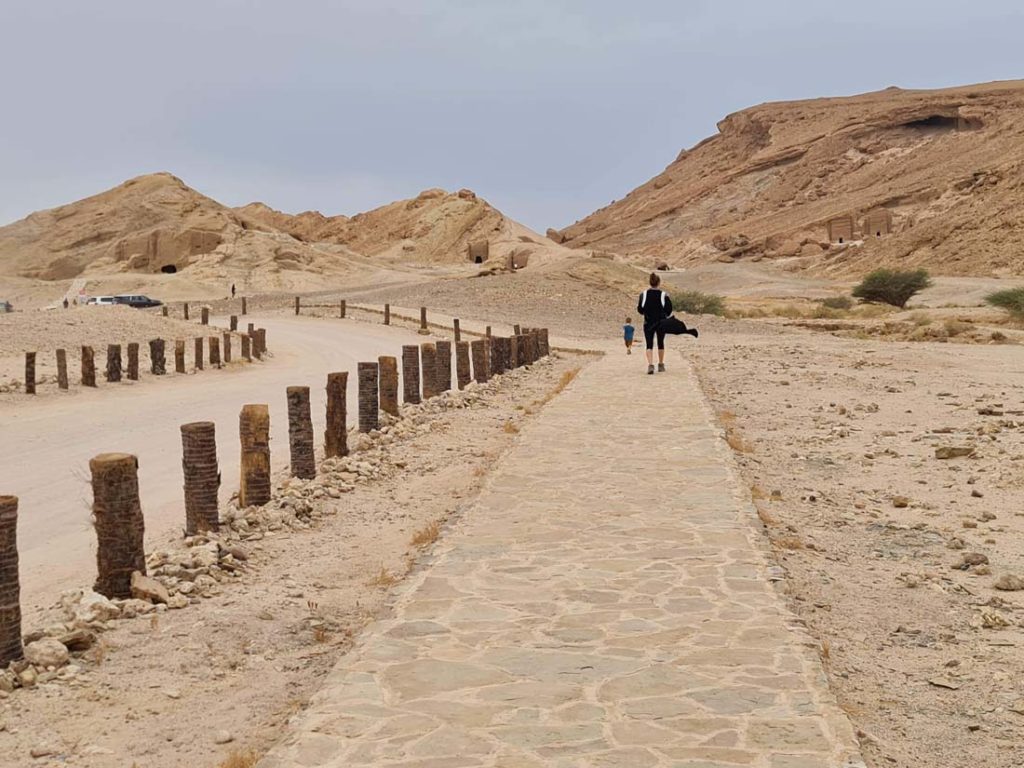
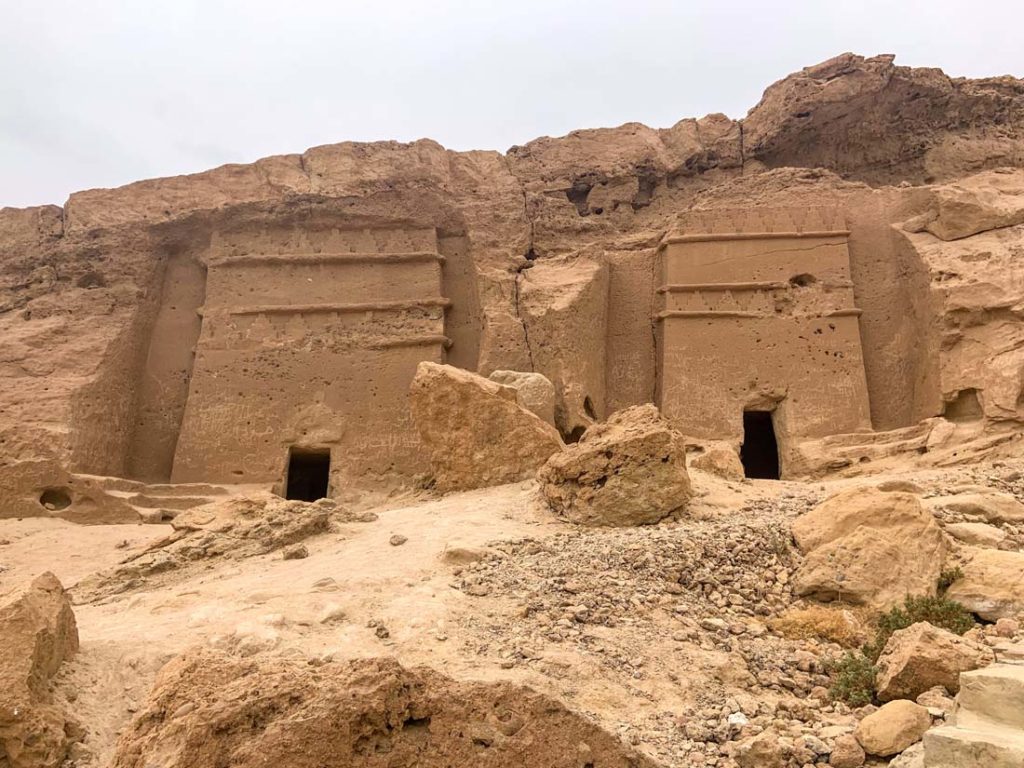
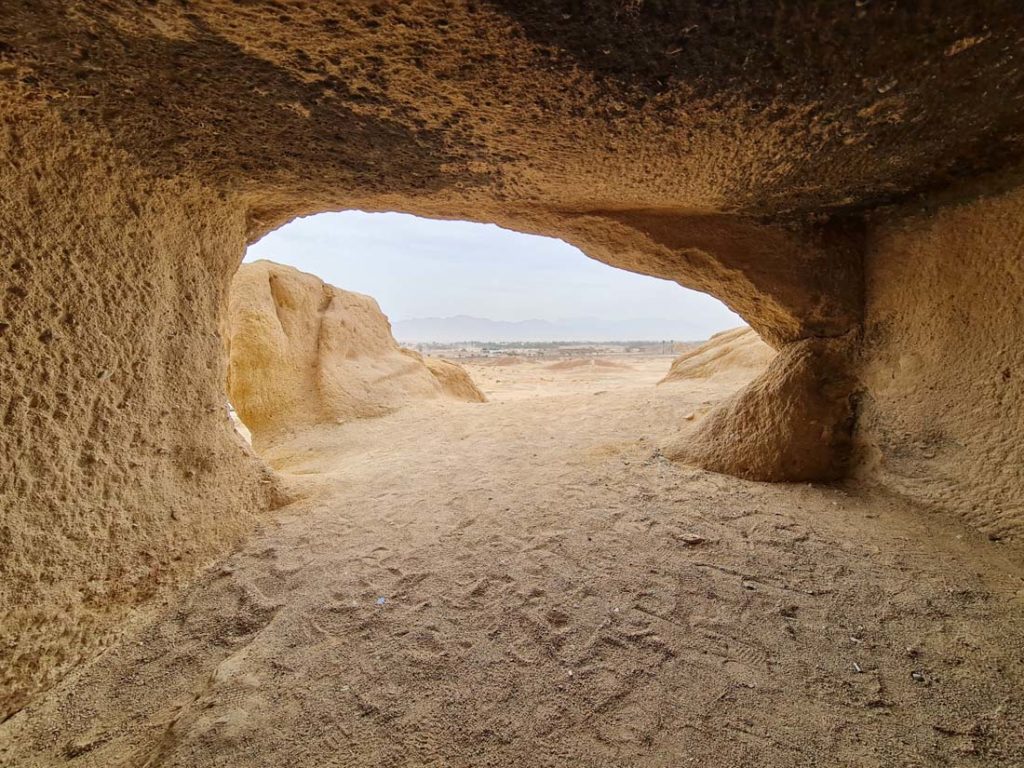
Split Rock
A short drive north of Al Bada, we turned off the main road at a mosque and began our bumpy trek into the mountains, in search of the Split Rock at Horeb. With a monochrome panorama of sandy tan filling our vision, we drove for about an hour on dirt paths, weaving between mountains and led by a bold pack of camels at one point. Finally, we saw the Split Rock, jutting from the top of a small mountain and impossible to miss. We climbed up to the split and took time to marvel at the surroundings – nothing except sand and rocks in sight – and to imagine how desperate the Israelites would’ve been. They directed their anger at Moses, “Why did you bring us out of Egypt to make us and our children and livestock die of thirst?” (Exodus 17:3). The people were overwhelmed by their situation and doubted their leader and God’s sovereignty. But then the Lord ordered Moses to strike the rock and water gushed out for the people to drink. This very rock we climbed up to and touched with our hands – this could have been the rock. There’s no way to tell for sure, but we do know the surroundings would have looked extremely similar. On our drive away from the rock, rain started to dot our windows and when we looked back, a faint rainbow arched over the area where we had just been…nice touch, God.
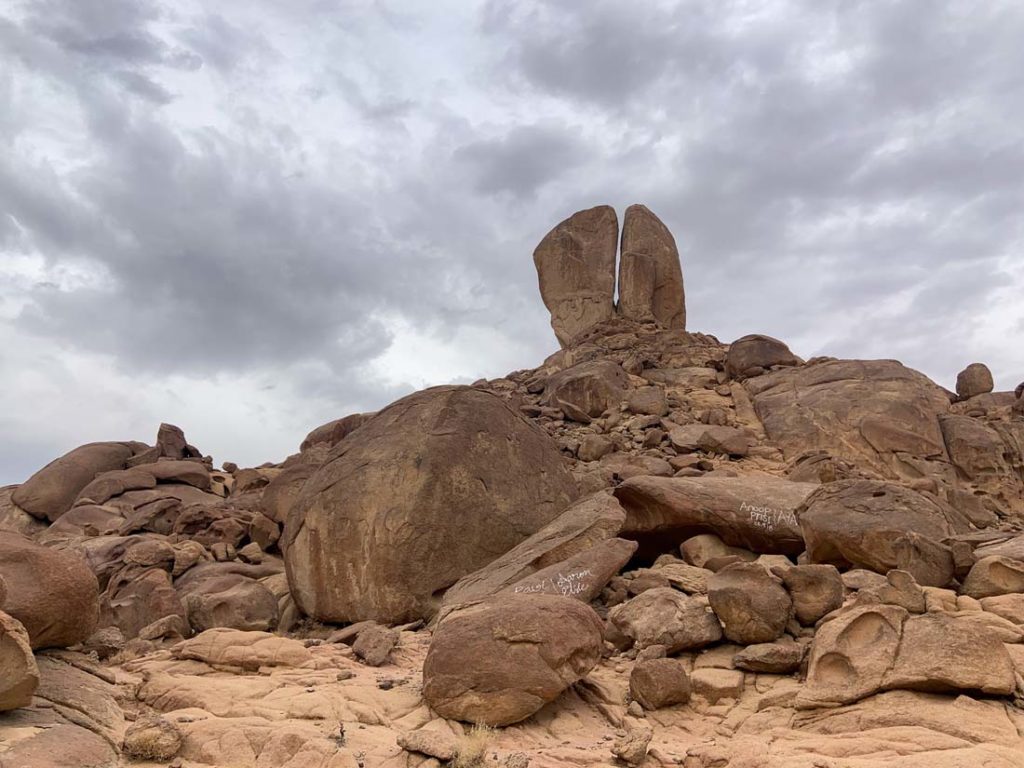

Georgios G Shipwreck
After a rough ride through the desert back to civilization, we raced down the coastal highway to make it to a scenic shipwreck before sunset. The Georgios G ship became stranded on the coral off the coast of Saudi in 1978. Not long after, it was undergoing inspection in that spot before it was transferred to a new owner when it caught fire and the flames destroyed everything except the metal shell that juts halfway out of the water. And there it sits, a hunk of metal basking in the orangish-pink hues of the setting sun, now declared a NEOM Historical Location.
We spent that evening in Haql, a small seaside village only 5 kilometers from the border of Jordan. From Haql you can see the coasts of Jordan, Israel, and Egypt, and the area is known as a diving destination. We had a seafood dinner (naturally) before retiring to our 2-story villa on the water.
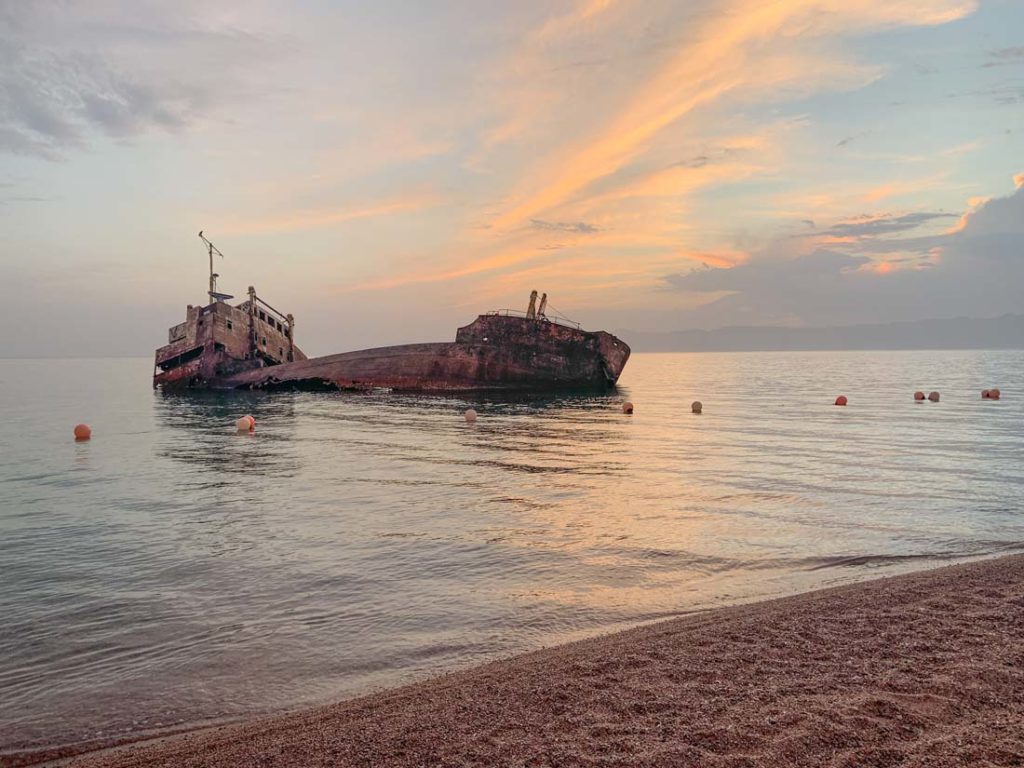

The next full day was a desert expedition to Mt. Sinai/Jabal Maqla and its surrounding landmarks of interest. We found our breakfast favorite in Haql (fateera egg sandwiches), grabbed some black coffee, visited a mosque restroom, and embarked southeast back into the sandy wilderness.
Golden Calf Altar
Our first stop was the Golden Calf Altar. I’m sure you’re familiar with the story – Moses was up on Mt. Sinai for 40 days, receiving the 10 Commandments from God, and when he came down he saw the Israelites worshiping a golden calf they had fashioned out of melted gold jewelry. The people seriously couldn’t wait 40 days before taking things into their own hands. Anyway, not far from what the locals call Moses’ Mountain (aka Mt. Sinai) there is a large pile of rocks, surrounded by a fence and a sign marking it as an “archaeological site.” These rocks have a ton of odd bull petroglyphs and as we climbed around the area, we were confronted with the strange (not exactly anatomically-correct) etchings. Historians claim the etchings might be similar to Egyptian bull-gods, which the Israelites would have been familiar with, but nothing absolute has been determined. We were impressed by the size of the rock pile, the amount of bull etchings, and the fact that they’re isolated to this gathering of rocks – not spread throughout the area. Though it’s unclear if this is the actual spot where the Golden Calf mentioned in Exodus was created and worshiped, the place gave me an eerie feeling and I was happy to move on to our next destination.
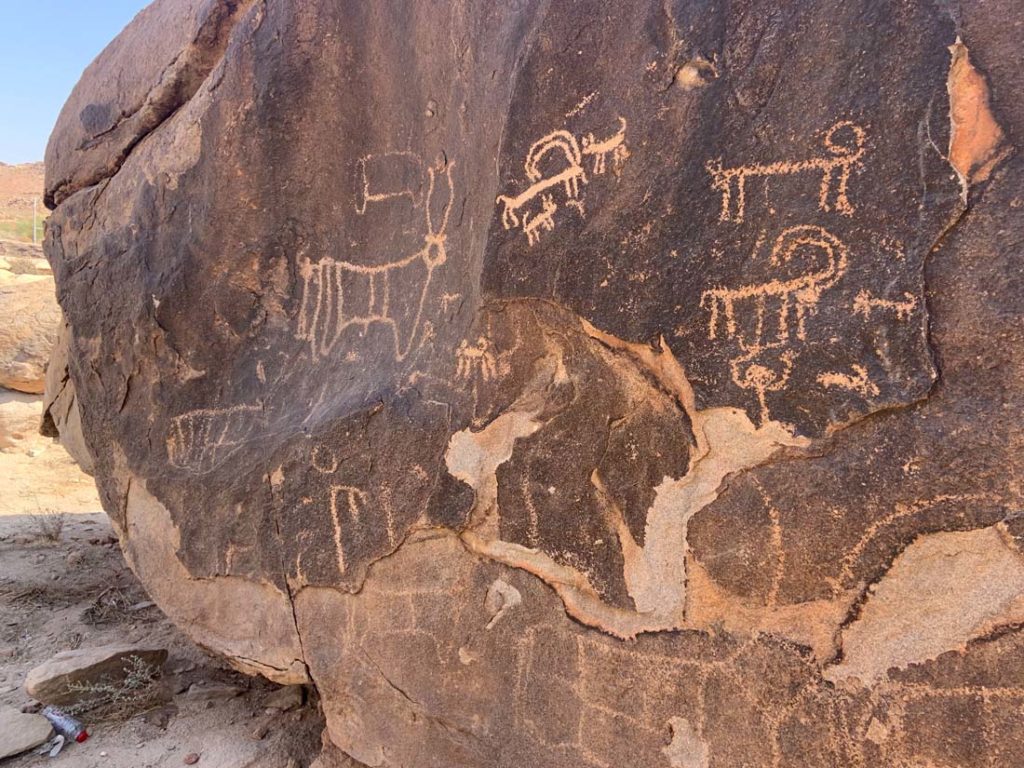
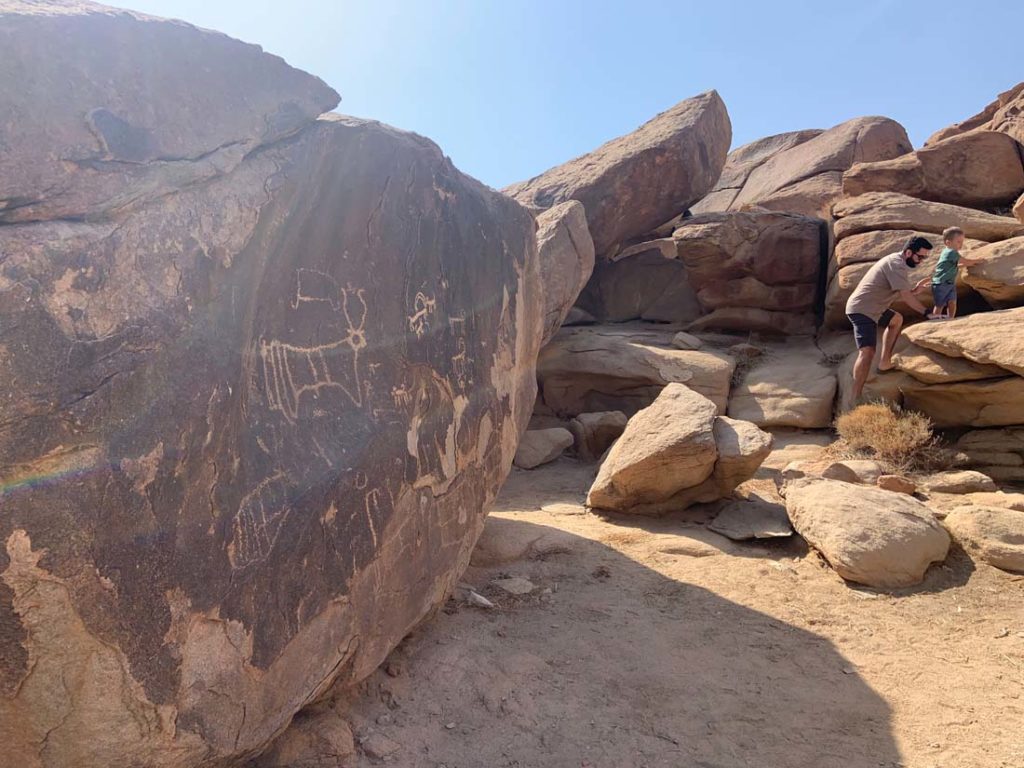
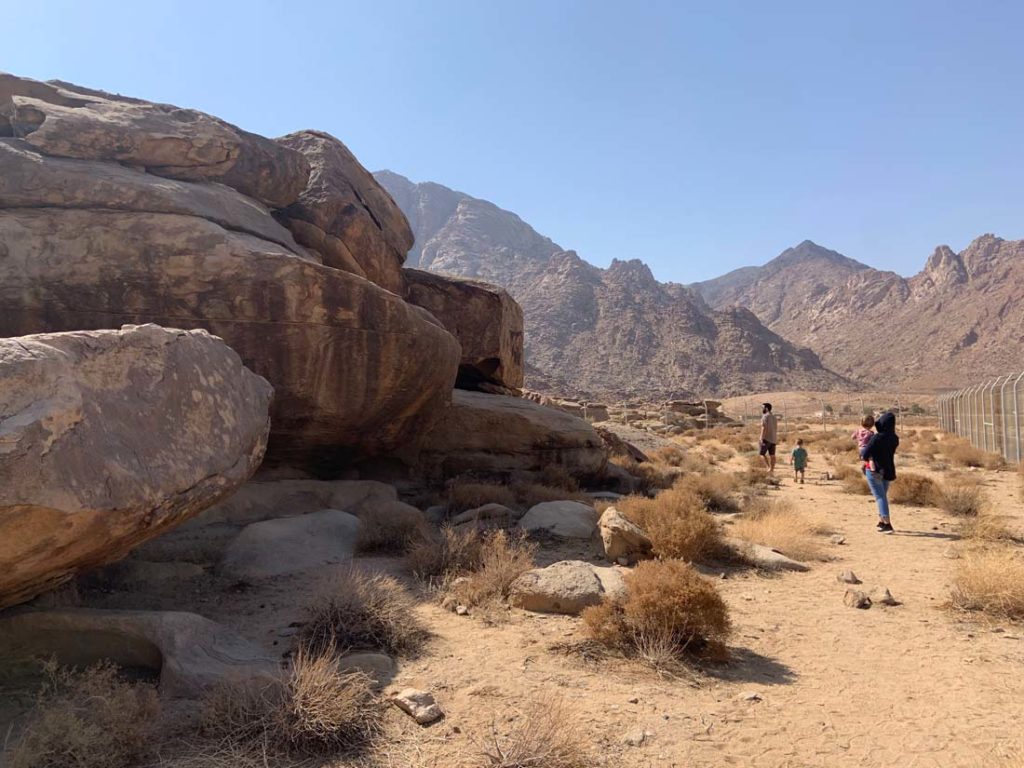
Mt. Sinai, Moses’ Altar, Elijah’s Cave
From the Golden Calf Altar, our guide drove us as close as he could to the base of Mt. Sinai, where an altar of Moses is said to be. A bit of a hike was required so Sean and I left our kids to play in the sand near the car with the babysitter while we forged ahead to find the altar described in Exodus 24, which Moses built at the foot of Mt. Sinai as God had prescribed (not very high, made of natural stones) with twelve pillars to represent the twelve tribes of Israel. Sean and I found the spot, with low rock walls which apparently would’ve served as chutes for the animals, and white marble pillars that stuck out in the sandy brown landscape – 10, not 12. From this altar, we could look up at a sub-peak of Mt. Sinai and see a recess in the mountain where Elijah’s Cave is alleged to be. Elijah took refuge in this cave when fleeing from Queen Jezebel’s wrath after he had called down fire and killed a bunch of her false prophets (yowza). In the cave is where he heard the gentle whisper from God and was commissioned to return to the Israelites. We didn’t have time to climb the 300 meters up to the cave, but we have had friends who have done so, and even slept inside.
Sean and I passed that mountain and climbed toward Mt. Sinai’s black peak, but the blazing sun (and parenting responsibilities) forced us to turn around and head back to the car before we could get very far. The peak of the mountain is black due to the volcanic rock it is composed of, but there are also theories that its color comes from being burned when God descended on the mountain in fire. We would love to return to this area to hike and explore more. On the way back, we ran into a local Saudi guy who was climbing (he’s lived in the area his whole life and said he knows every rock and crevice on the mountains) and he told us it’s very difficult to climb to the peak of Mt. Sinai, but he has done it and planted the Saudi flag there. We got his number so next time we return he can lead us up the mountain.
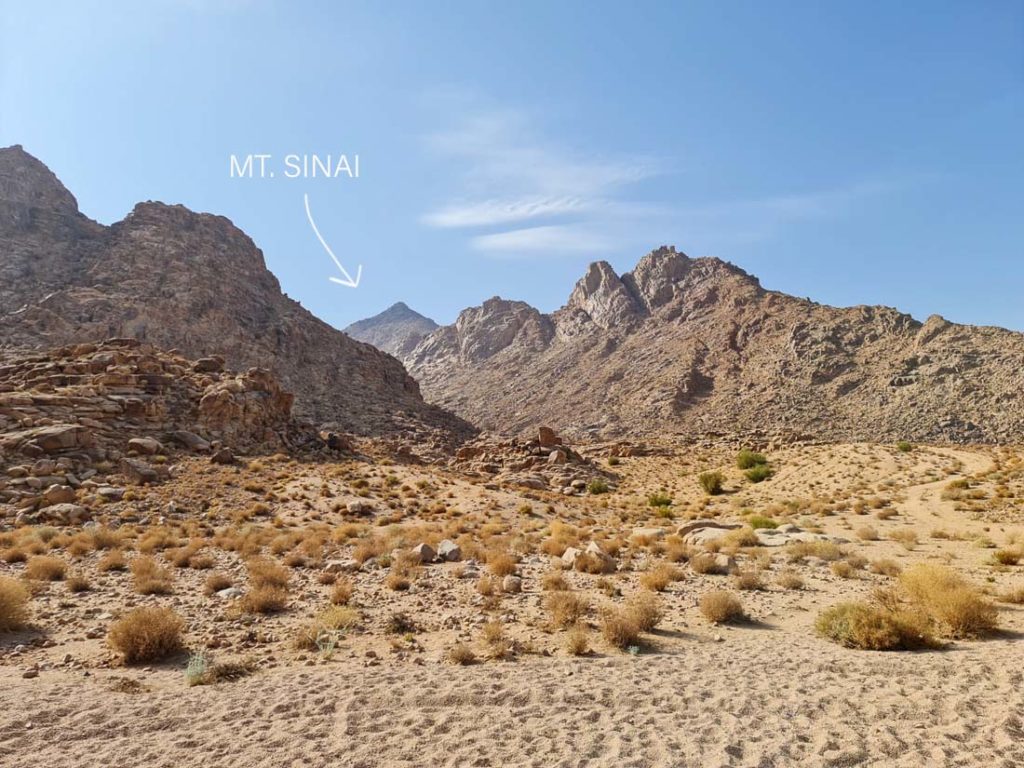
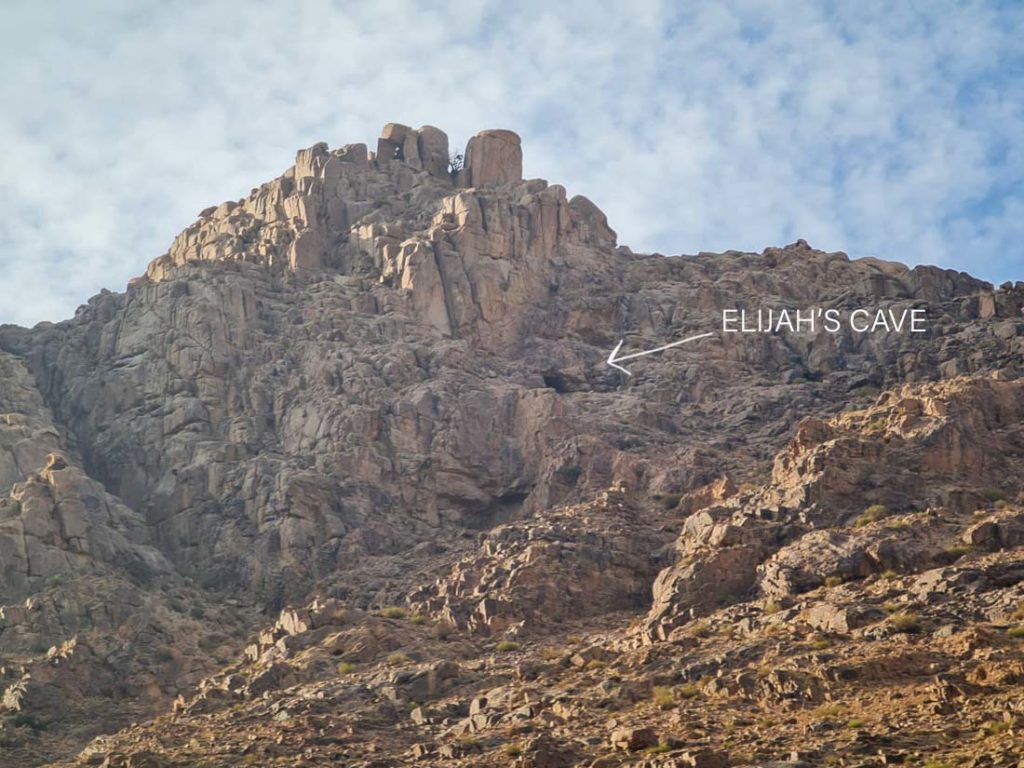

Once we reunited with our sand-covered kids, we headed back to Tabuk on a drive through amazing sandstone formations. We enjoyed a charming dinner at LaVilla then retired to our villa-of-the-night which boasted a foosball table as feature entertainment.
Tabuk Castle & Hejaz Railway Museum
Our final morning, we visited Tabuk Castle, an ancient Ottoman fortress dating back to 1559. The castle is located downtown and has been converted into a two-story museum housing a small amount of historical artifacts and information about Tabuk’s evolution through the years. It’s free to enter and takes about 30 minutes max to tour. Down the street from the castle are several shops selling colorful camping gear. We spent too much time browsing and bartering in the shops so we only had a few minutes left to breeze through the Hejaz Railway Museum on our way to the airport.
The Hejaz Railway station in Tabuk has been preserved from the early 1900’s and houses a locomotive and freight car from that time period. Information about the Hejaz Railway lines the walls of the station. Long story short – the railway stretched throughout Arabia, from Damascus to Medina, and was supposed to aid pilgrims in their hajj, but the railway was a repeated target of attack during World War 1 and was never rebuilt after the fall of the Ottoman Empire in 1920 (https://www.visitsaudi.com/en/do/culture/the-hijaz-railway). There have been talks about rebuilding the railway, and an attempt to do so in the 60’s that was thwarted by another war, but nothing has materialized thus far.
We waved goodbye to the trains (the toddler farewell) and headed to the Tabuk airport. After loading our luggage carts, we took one last pic with our Desert Paths guide, Emad. He was a gem throughout our visit: kind, generous, and concerned about making sure we had a great experience. He even gave us a parting gift of some top-notch Tabuk zaatar and olive oil.

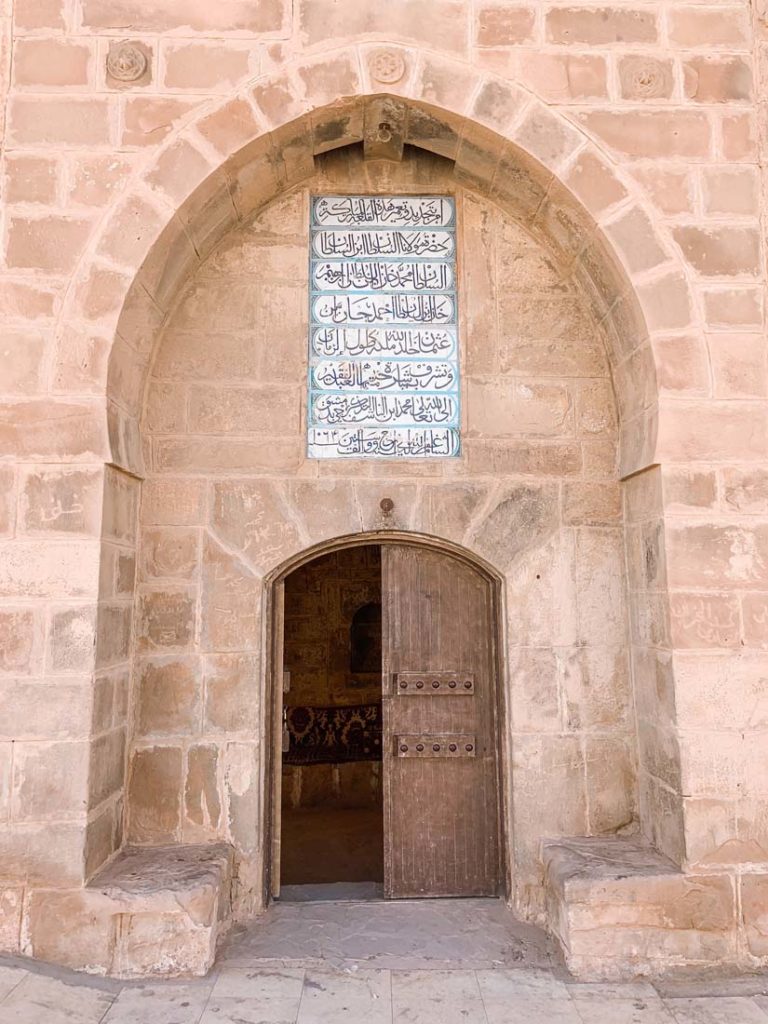
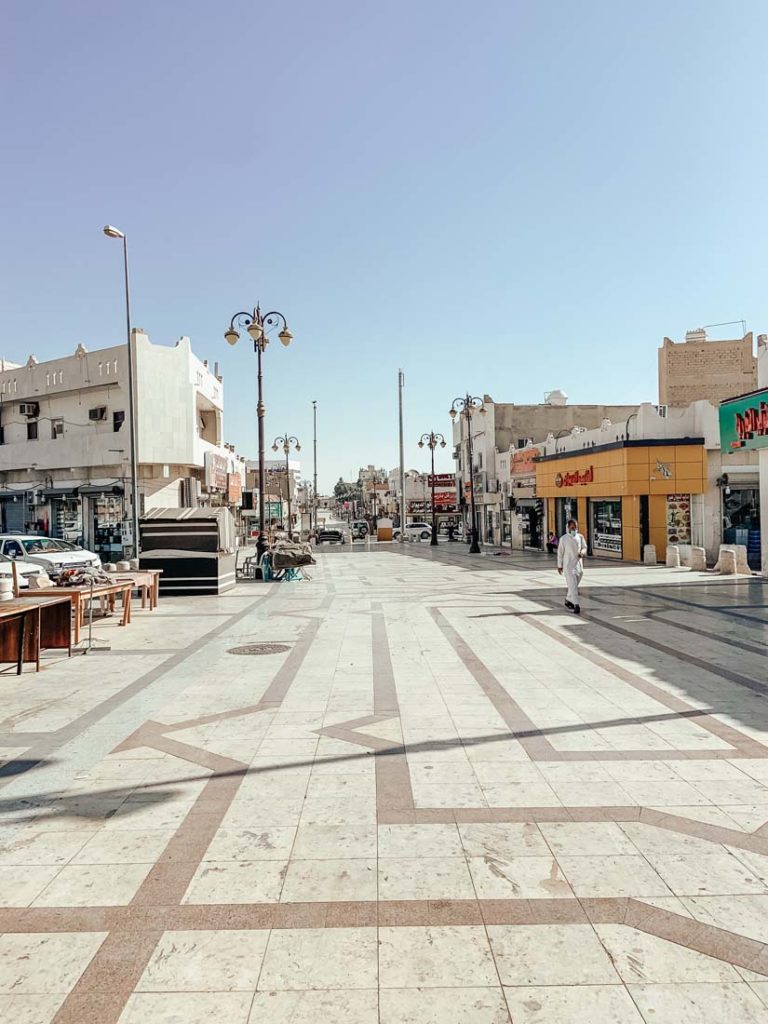
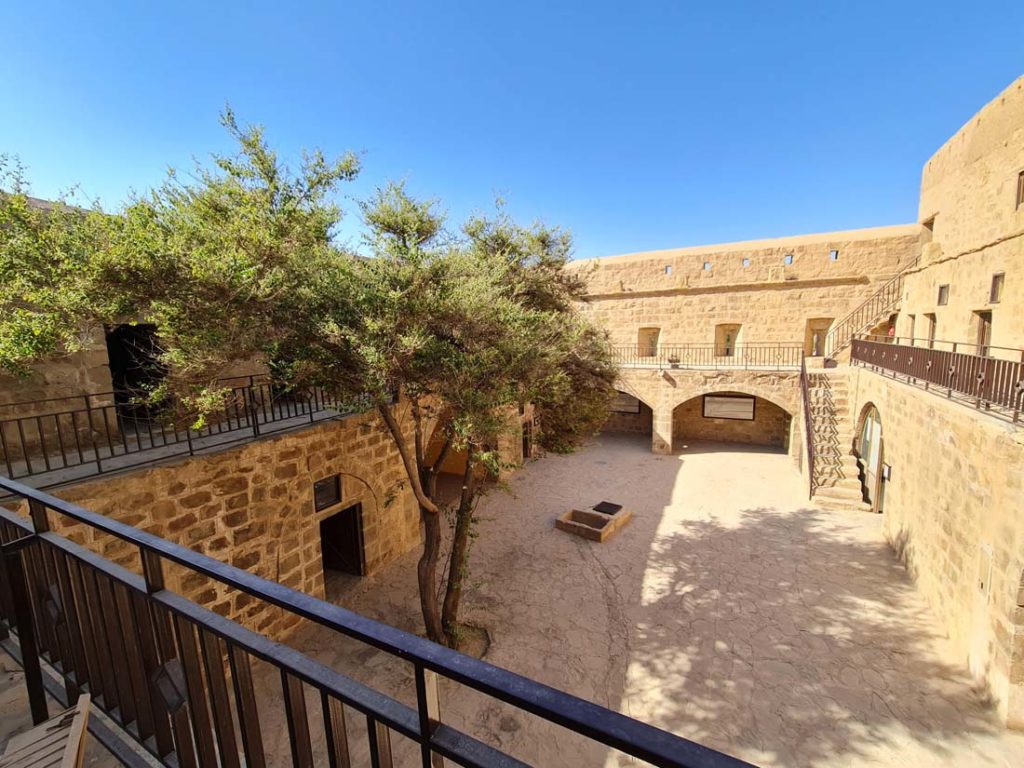
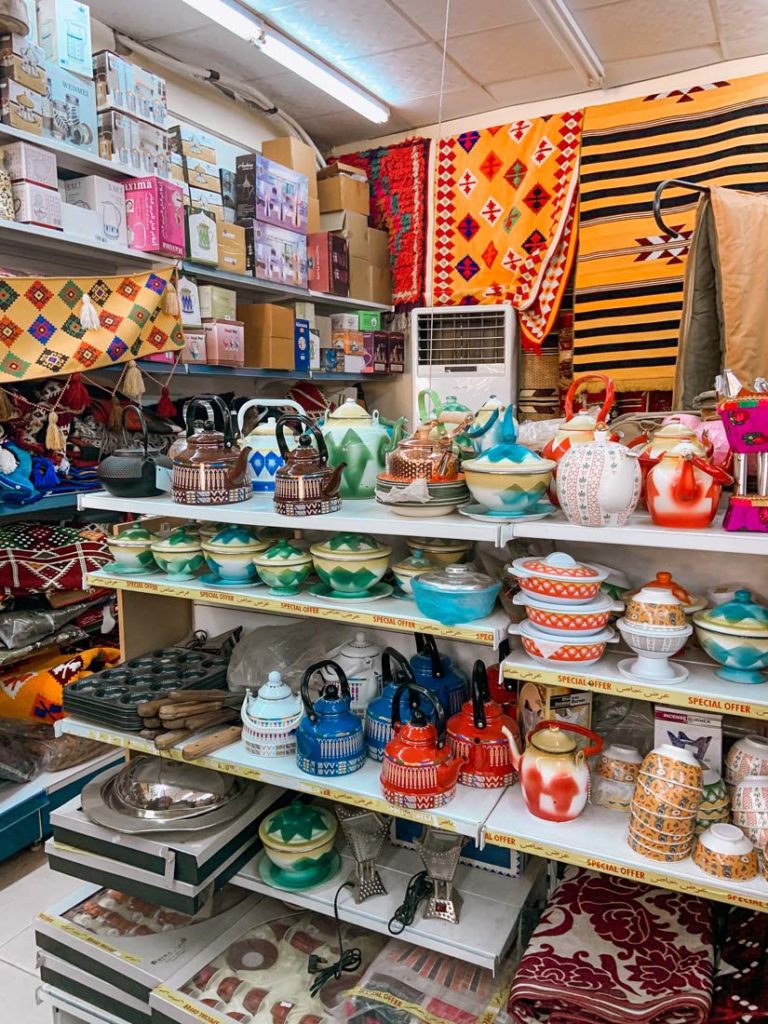

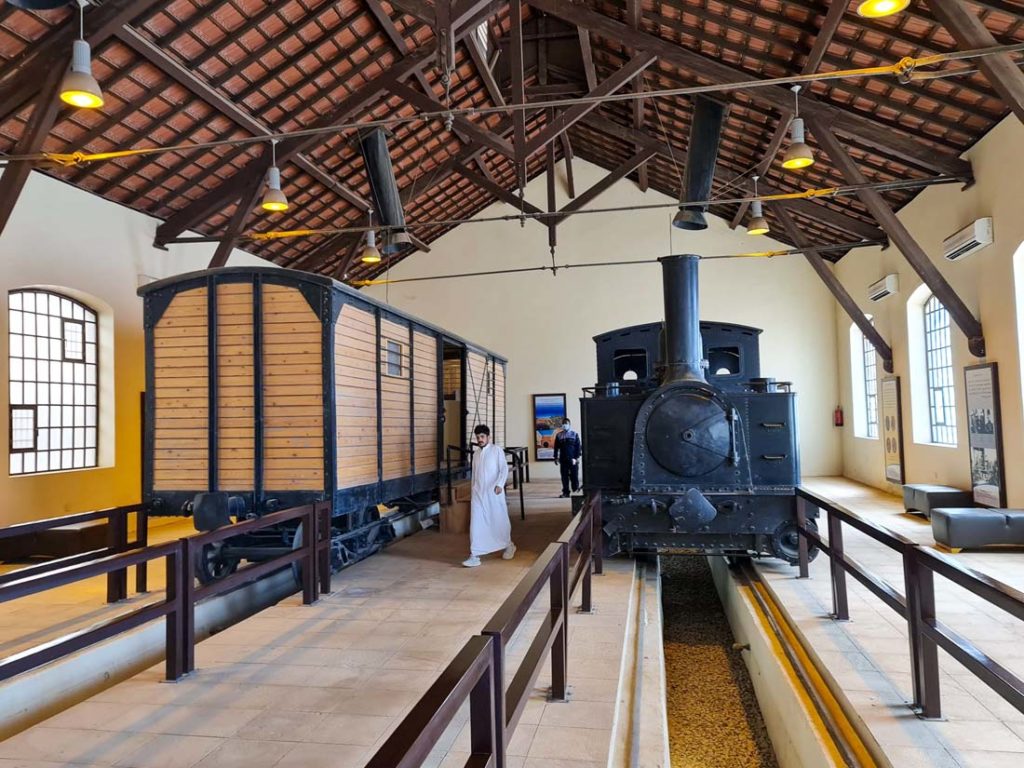
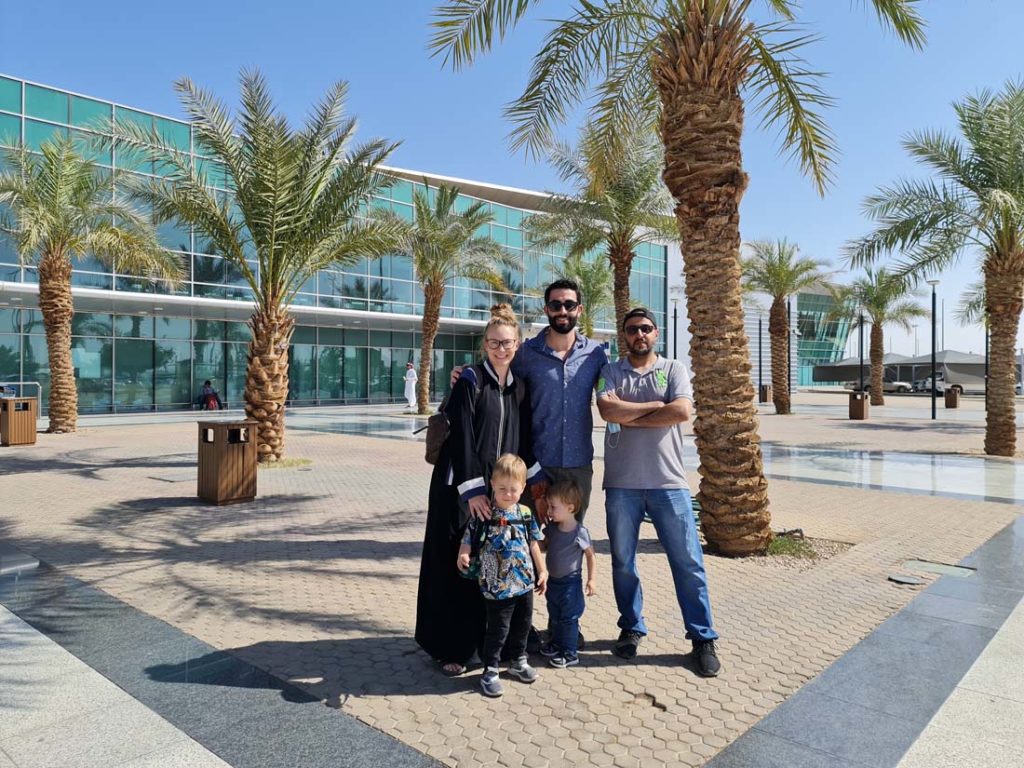
Overall, we loved our journey through the Land of Midian and the way the surroundings transported us to the time of Moses. The most impactful part for us was the ability to put ourselves in the Israelites’ place and imagine what the Exodus was physically like for them – wandering in the desert, worried about their survival, and wholly dependent upon God (although prone to straying). For us, the trip wasn’t about going to sites we know are 100% accurate. I’m no archaeologist and I won’t try to convince anyone that the places we saw are absolutely accurate (tracing the route of a nomadic people that left little to no physical or material evidence seems like a losing game), but we do know the terrain is very similar to what Moses and the Israelites experienced. We have the Red Sea – and though we don’t know exactly where the crossing took place – that doesn’t take away from our visualization of it happening. I consider it a blessing to be able to travel to these sites while they’re open to the public but still very much untouched and in their natural state. Now is the time to visit, people!
Since the area is undeveloped and many sites are in the desert where cell service doesn’t reach, I highly recommend booking with a tour company like Desert Paths, or at least caravanning with multiple cars in case one gets stuck or breaks down. We were grateful Desert Paths took care of booking accommodations for each night and provided our meals – it relieved all the stress of trying to find suitable places and negotiating prices in Arabic. Also, flexibility is key to us when traveling because of the unpredictability of little kids, and our guide was very willing to work with our family’s needs (stopping for frequent restroom breaks, snack runs, etc.). I’m happy to share more details with anyone who is looking to plan a trip! Comment on this post or contact me here.

